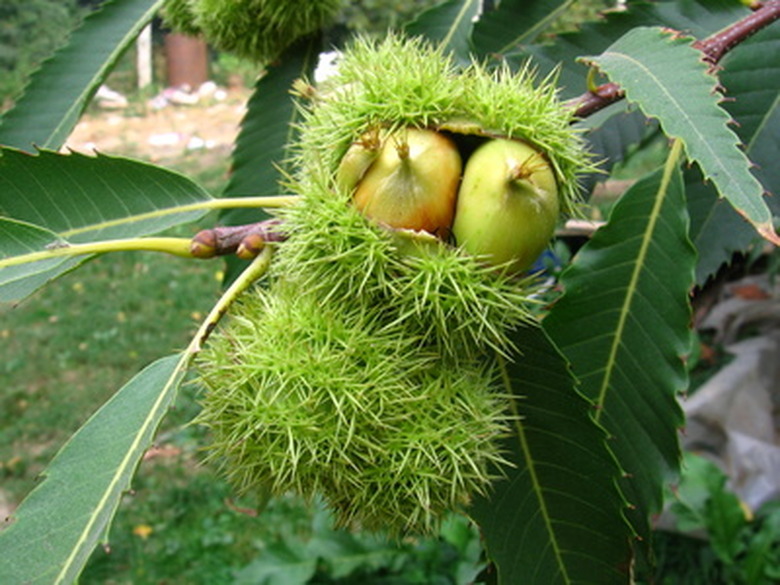Chestnut Trees In South Carolina
Roasting chestnuts is one of the most romantic rituals of the American fall and winter holiday season. In South Carolina, four species of chestnut trees (Castanea spp.) may be grown, but one, the American native chestnut, is continually inflicted by chestnut blight, preventing nuts. These four species of chestnuts all form spiny burs with three chestnuts inside them. Large shrubs called chinkapins are alternatives to trees.
American Chestnut
Once widespread in the woodlands of eastern North America, including upstate South Carolina, was the American chestnut (Castanea dentata). Introduction of a fungus in the early 20th century decimated huge populations of this tree. Today, only stumps remain of once large trees. Suckering branches grow from these trunks, but they do not grow large enough or long enough to flower and produce the sweet, tasty chestnuts. If encountered in the wild in South Carolina, this species looks like a tall, leggy shrub.
- Roasting chestnuts is one of the most romantic rituals of the American fall and winter holiday season.
- may be grown, but one, the American native chestnut, is continually inflicted by chestnut blight, preventing nuts.
Chinese Chestnut
This species from northern China and Korea is grown across South Carolina as a shade ornamental and substitute for the American chestnut. Plant nurseries usually grow this tree from seed, and thus there is variation in chestnuts among plants, and the taste of the nuts are not as delicious as those of the American chestnut. Some consider the Chinese chestnut messy with its drop of nuts and leaves. It is hardy across all of South Carolina and is resilient to the chestnut blight disease.
Japanese Chestnut
From Japan, this species, Castanea crenata, was first introduced into the United States in the 19th century. It is not affected by the chestnut blight. Rarely grown in South Carolina, perhaps hybrids of these species with the European chestnut were developed and may exist in old gardens. The chestnuts are considered bitter to the taste buds, especially if harvested too early from the spiny burs.
- This species from northern China and Korea is grown across South Carolina as a shade ornamental and substitute for the American chestnut.
- Plant nurseries usually grow this tree from seed, and thus there is variation in chestnuts among plants, and the taste of the nuts are not as delicious as those of the American chestnut.
Spanish Chestnut
Also called "marone" or "marron," this species' chestnuts are the common type sold in supermarkets. Native to southern Europe, northern Africa and western Asia, this species is best in the warmer areas across South Carolina. In fact, soils that are only mildly acidic are best (pH 6.0 to 7.0). This species is susceptible to chestnut blight in North America, but more resilient to it when growing in Europe and Asia, interestingly.
Chinkapin
Smaller-size trees or large shrubs that are part of the botanical genus Castanea are commonly called chinkapins or chinquapins. These plants bear spiny burs that split open to reveal one chestnut each. In South Carolina, two native chinkapins of note are the Allegheny chinkapin (Castanea pumila) and the trailing chinkapin (Castanea alnifolia).
- Also called "marone" or "marron," this species' chestnuts are the common type sold in supermarkets.
- This species is susceptible to chestnut blight in North America, but more resilient to it when growing in Europe and Asia, interestingly.
